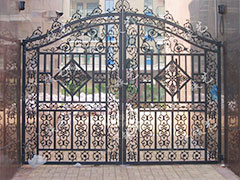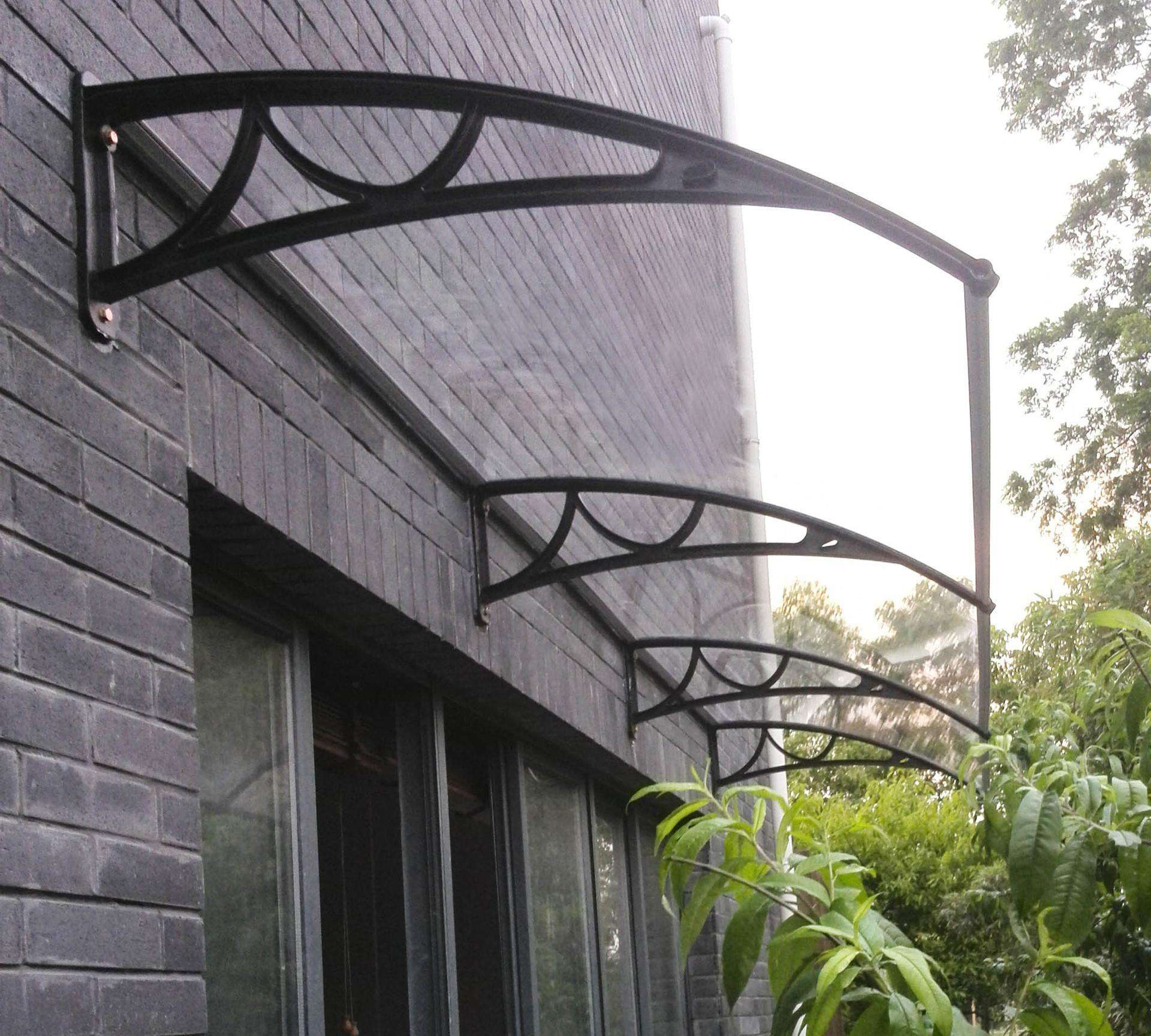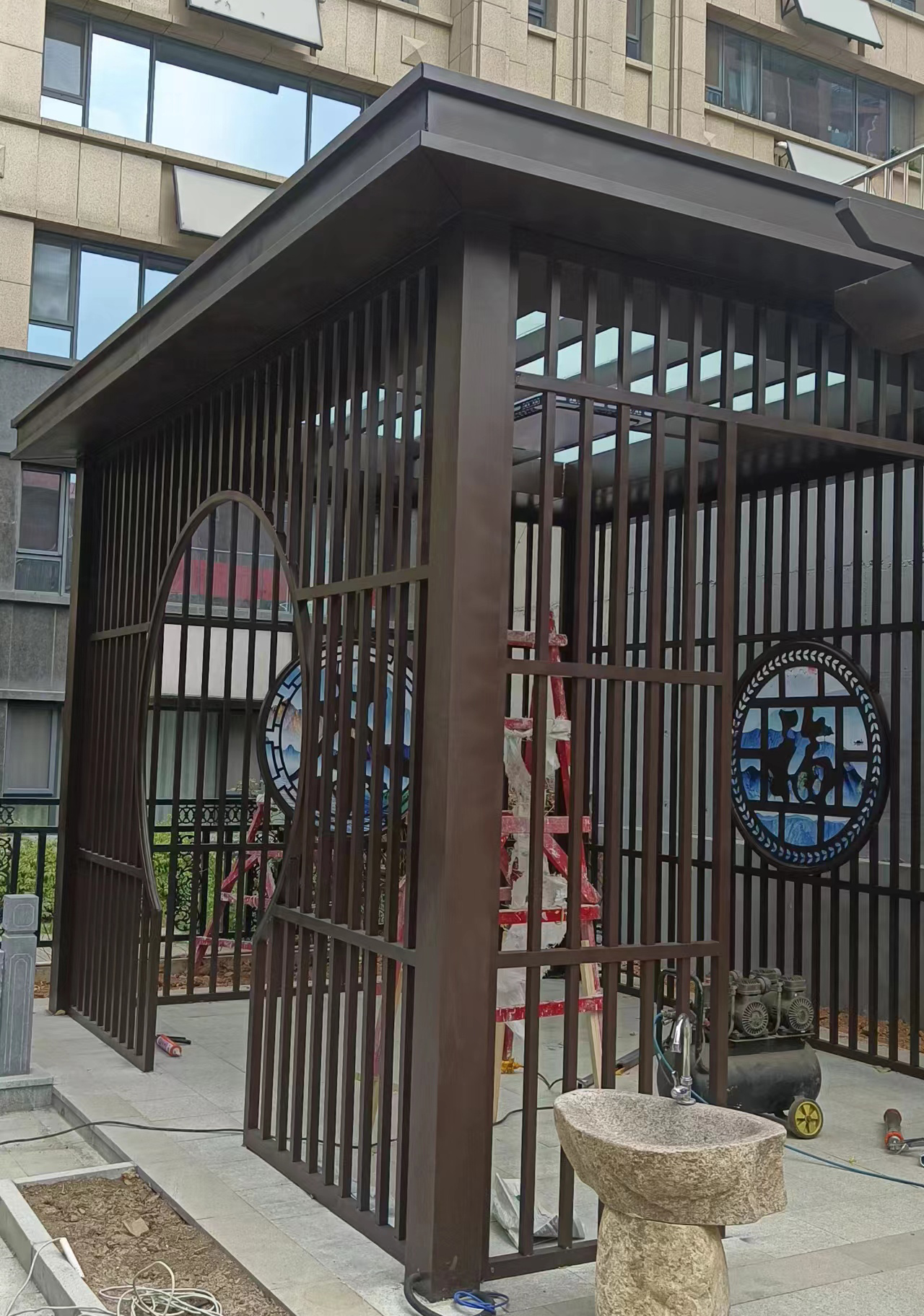联系我们
- 联系人:济南燕翔铁艺制品有限公司
- 手机:15953126901
- 电话:15153196527
- 邮箱:785385551@qq.com
- 地址:济南市天桥区历山北路黄台不锈钢市场3区317

什么是轻钢结构?其核心材料特性有哪些?
钢结构的定义
Definition of Steel Structure
钢结构是指以钢材为主要材料构成的结构体系,通过焊接、螺栓连接等方式将型钢(如 H 型钢、工字钢、角钢等)、钢板或钢管等钢材构件组合成承重骨架,用于建造房屋、桥梁、塔架、工业厂房等各类工程结构。其本质是利用钢材的力学性能实现结构的承载和稳定,具有自重轻、强度高、施工周期短等特点,在现代建筑和工程领域应用广泛。
Steel structure refers to a structural system mainly composed of steel materials. Steel components such as H-beams, I-beams, angle steels, steel plates, or steel pipes are combined into a load-bearing skeleton through welding, bolt connections, and other methods. It is used to construct various engineering structures such as houses, bridges, towers, and industrial plants. Its essence is to utilize the mechanical properties of steel to achieve structural load-bearing and stability. It has the characteristics of light weight, high strength, and short construction period, and is widely used in modern architecture and engineering fields.
钢结构核心材料特性分析
Analysis of the Characteristics of Core Materials in Steel Structures
一、力学性能特性
1、 Mechanical performance characteristics
特性
feature
具体表现
specific manifestations
对钢结构的影响
The impact on steel structures
高强度
high-intensity
钢材的抗拉强度(如 Q355 钢材抗拉强度≥355MPa)、屈服强度远高于混凝土、木材等材料。
The tensile strength (such as Q355 steel tensile strength ≥ 355MPa) and yield strength of steel are much higher than those of materials such as concrete and wood.
可构建大跨度、高耸结构(如体育馆、电视塔),减少构件截面尺寸,降低结构自重。
It can construct large-span and towering structures (such as sports halls and TV towers), reduce the cross-sectional size of components, and lower the self weight of the structure.
塑性与韧性
Plasticity and toughness
塑性指材料破坏前产生显著变形的能力(伸长率≥20%),韧性指抵抗冲击荷载的能力。
Plasticity refers to the ability of a material to undergo significant deformation (elongation ≥ 20%) before failure, while toughness refers to its ability to resist impact loads.
结构在超载或地震等突发荷载下不易突然断裂,具有良好的变形能力和吸能性,提升安全性。
The structure is not easily broken under sudden loads such as overloading or earthquakes, and has good deformation capacity and energy absorption, improving safety.
弹性模量稳定
Stable elastic modulus
钢材弹性模量约为 2.06×10?MPa,在弹性阶段应力与应变成线性关系,力学性能可预测性强。
The elastic modulus of steel is about 2.06 × 10 ? MPa, and there is a linear relationship between stress and strain during the elastic stage. The mechanical properties are highly predictable.
便于结构设计计算,确保荷载传递和变形控制符合设计预期。
Facilitating structural design calculations to ensure load transfer and deformation control meet design expectations.
二、物理性能特性
2、 Physical performance characteristics
密度适中:钢材密度约 7850kg/m?,虽高于混凝土(约 2400kg/m?),但因强度高,单位强度下的重量(比强度)优于混凝土,适合建造轻量级结构。
Moderate density: The density of steel is about 7850kg/m ?, which is higher than that of concrete (about 2400kg/m ?), but due to its high strength, its weight per unit strength (specific strength) is better than that of concrete, making it suitable for constructing lightweight structures.
导热性高:钢材导热系数约 58W/(m?K),遇火灾时温度快速升高,强度显著下降(如 600℃时强度降至常温的 1/3),因此需额外设置防火涂层或包裹防火材料。
High thermal conductivity: The thermal conductivity of steel is about 58W/(m · K). In the event of a fire, the temperature rapidly increases and the strength significantly decreases (such as the strength drops to 1/3 of room temperature at 600 ℃). Therefore, additional fireproof coatings or fire-resistant materials need to be installed.
耐腐蚀性差:在潮湿或腐蚀性环境中易生锈(锈蚀速率约 0.01-0.05mm / 年),需通过表面镀锌、涂漆等防腐处理延长使用寿命。
Poor corrosion resistance: prone to rusting in humid or corrosive environments (rusting rate of about 0.01-0.05mm/year), requiring anti-corrosion treatment such as surface galvanizing and painting to extend service life.
三、工艺与可加工性特性
3、 Process and processability characteristics
可焊性:钢材通过焊接可形成牢固连接,焊缝强度接近母材,便于现场拼装和复杂节点设计(如网架结构节点)。
Weldability: Steel can form a strong connection through welding, and the weld strength is close to that of the base material, making it easy to assemble on site and design complex nodes (such as grid structure nodes).
可机械加工性:可通过切割、钻孔、冷弯等工艺制成各种形状构件,适应多样化建筑造型(如曲线型屋顶、异形幕墙支撑结构)。
Machinability: Various shapes of components can be made through cutting, drilling, cold bending and other processes to adapt to diverse building shapes (such as curved roofs, irregular curtain wall support structures).
装配性与重复利用性:构件可在工厂预制后运输至现场装配,施工效率高;废旧钢材可 100% 回收再利用,符合绿色建筑理念。
Assemblability and reusability: Components can be prefabricated in the factory and transported to the site for assembly, resulting in high construction efficiency; Waste steel can be 100% recycled and reused, in line with the concept of green building.
四、环境适应性特性
4、 Environmental adaptability characteristics
抗震性能优异:钢材的轻质和韧性使其在地震荷载下动态响应良好,结构自振周期长,可减少地震力作用,如日本、新西兰等地震多发区广泛使用钢结构建筑。
Excellent seismic performance: The lightweight and toughness of steel make it dynamically responsive to seismic loads, with a long natural period of the structure, which can reduce the effect of seismic forces. Steel structures are widely used in earthquake prone areas such as Japan and New Zealand.
温度敏感性:在 - 20℃以下低温环境中,钢材可能出现 “冷脆” 现象(冲击韧性下降),需选用低温韧性好的钢材(如 Q355ND);高温环境下则需采取隔热措施。
Temperature sensitivity: In low-temperature environments below -20 ℃, steel may exhibit "cold brittleness" phenomenon (decreased impact toughness), and steel with good low-temperature toughness (such as Q355ND) should be selected; Insulation measures should be taken in high-temperature environments.
延伸:钢结构的应用场景与材料选型
Extension: Application scenarios and material selection of steel structures
典型应用:高层写字楼(如上海中心大厦)、大跨度场馆(鸟巢体育场)、工业厂房(钢结构车间)、桥梁(杭州湾跨海大桥钢箱梁)等。
Typical applications: high-rise office buildings (such as Shanghai center Building), long-span venues (Bird's Nest Stadium), industrial plants (steel structure workshops), bridges (steel box girders of Hangzhou Bay Sea Crossing Bridge), etc.
材料选型关键:根据荷载大小、环境条件(温度、腐蚀介质)、施工工艺选择钢材牌号(如 Q235、Q355、Q460 等),并结合规范(如《钢结构设计标准》GB 50017)进行强度、稳定性验算。
Key to material selection: Select steel grades (such as Q235, Q355, Q460, etc.) based on load size, environmental conditions (temperature, corrosive medium), and construction technology, and conduct strength and stability calculations in accordance with specifications (such as the "Steel Structure Design Standard" GB 50017).
通过理解钢材的核心特性,可更科学地设计和应用钢结构,充分发挥其在工程中的优势。
By understanding the core characteristics of steel, steel structures can be designed and applied more scientifically, fully leveraging their advantages in engineering.
本文由 济南轻钢结构 友情奉献.更多有关的知识请点击 http://www.jnghbxg.com/ 真诚的态度.为您提供为全面的服务.更多有关的知识我们将会陆续向大家奉献.敬请期待.
This article is a friendly contribution from Jinan Light Steel Structure For more related knowledge, please click http://www.jnghbxg.com/ Sincere attitude To provide you with comprehensive services We will gradually contribute more relevant knowledge to everyone Coming soon.








